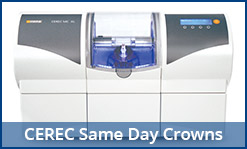You may be surprised to learn that recent studies indicate that U.S. adults between the ages of 35 and 50 are missing, on average, from 5 to 7 teeth! That’s a remarkable number. And while it’s true that those numbers may include wisdom teeth – many people have between 1 and 4 wisdom teeth pulled in their early 20s – that’s still a lot of missing teeth! Fortunately, modern dental technology provides many methods to replace those teeth, several of which are described below:
- Dental implants – An implant consists of a metal rod (typically made from titanium) that is inserted into the patient’s jawbone. After a few months, the metal fuses to the bone. At that point, the patient’s dentist affixes a porcelain crown to the top of the implant. The result is a permanent solution to a missing tooth.
- Dental bridge – A dental bridge consists of one or more porcelain crowns fitted into a metal frame. The frame has brackets on each end that fit firmly over the patient’s existing teeth on either side. A bridge can either be removable or fixed (not removable). Bridges have been commonly used for many years, and with good reason – it’s a non-invasive but very effective method for replacing one or more teeth.
- Dentures – Dentures come in two varieties: full sets, for people who have lost all of their teeth or who need to have their teeth extracted, and partial sets, for people who are missing just a few teeth. Although dentures, in one form or another, have been around for many centuries, today’s dental appliances are much more comfortable and snug fitting than ever before. Full and partial sets of dentures can be removed by the patient for cleaning.
- Implant-supported dentures, partials and bridges – Implants can be used to support any of the tooth-replacement options listed above. Some are designed to be removable, while others are “fixed,” permanent tooth-replacement appliances that cannot be removed. Implant-supported appliances provide many advantages, but may not be the right solution for every patient.
If you are missing one or more teeth, ask your dentist about tooth-replacement options. Thanks to modern dental technology, no one has to live with missing teeth. In fact, most dental professionals would agree that it’s important to replace missing teeth as quickly as possible to prevent other teeth from shifting in place, which can throw off your bite and lead to a host of other problems. Talk to your dentist for more information.











